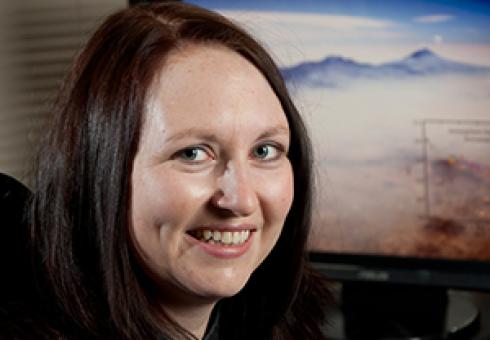Huffington Post || Ozone pollution, which worsens breathing problems and causes air quality warnings, may compound global warming's damage to the world's food crops, according to a new study.
Katherine Boehrer
Huffington Post
Ozone pollution, which worsens breathing problems and causes air quality warnings, may compound global warming's damage to the world's food crops, according to a new study.
Ground-level ozone, formed mainly from pollutants emitted by burning fossil fuels for cars, industry and power plants, increases as temperatures rise. That's why air quality warnings are more frequent in hot weather and why global warming has the potential to boost ozone pollution. Once formed, ozone can travel long distances, affecting even remote areas.
The new study, published Sunday in the journal Nature Climate Change, used models and historical trends to analyze the impact of climate change and ozone on four of the world's major food crops: wheat, rice, maize and soybeans. Ozone can harm plants by slowing photosynthesis and killing cells. According to the U.S. Department of Agriculture, “Ground-level ozone causes more damage to plants than all other air pollutants combined.”
The study showed that climate change is likely to reduce crop yields at least 10 percent by 2050 from 2000 levels. When the researchers compared two pollution scenarios from the Intergovernmental Panel on Climate Change's Fifth Assessment Report, they found that ozone would have more complex effects. In a higher ozone pollution scenario the researchers called "pessimistic," crop yields would decrease 15 percent by 2050. But in an "intermediate" ozone scenario, crop yields would fall 9 percent.
"The climate projections are quite consistent" in the two scenarios, one of the study's authors, Colette Heald of the Massachusetts Institute of Technology, told The Huffington Post. But "the future of ozone pollution is very different ... leading to either offsetting or reinforcing effects [of climate change] on crops."
The authors also looked at what this drop in food production may mean for world nutrition. Undernourishment, or the number of people not getting enough food, would increase by 49 percent by 2050 in the pessimistic ozone pollution scenario, and it would increase by 27 percent in the intermediate scenario.
The researchers point out that the effects of ozone pollution and climate change vary by region and the type of crop. For example, wheat does poorly when exposed to ozone, while corn is more sensitive to heat.
According to the U.S. Environmental Protection Agency, an increase in CO2 could mean some crops grow better, increasing yields. The study authors acknowledge this may offset effects of rising temperatures and pollution in some places.
However, the impact of climate change on agriculture also includes extreme weather events such as flooding, drought and exceptional temperatures, which may also damage crops. Weeds and pests may thrive in warmer temperatures, and ranges of certain pests and diseases could change, causing new challenges for farmers.
In a press release accompanying the new study, Heald said that the findings highlight the need for pollution reduction alongside climate action. “An air-quality cleanup would improve crop yields," she said. "Ozone is something that we understand the causes of, and the steps that need to be taken to improve air quality.”
Heald told HuffPost that the Clean Air Act has helped reduce surface ozone in the U.S. "Despite an increase in vehicle miles driven and energy consumption, surface ozone has declined by 25 percent on average across the U.S. from 1980 to 2012," she said. "However, the future of ozone air quality in the U.S. and around the world will depend on local emissions, the use of pollution control technology, regulations, and air quality policy."

